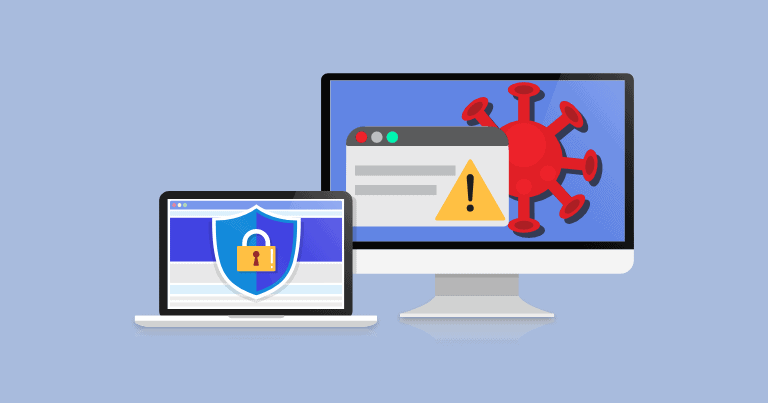Challenges and dares have been around for as long as there have been bored teenagers. The fad of phone booth stuffing, for instance, began way back in the 1950s, while goldfish swallowing dates back to the 1930s. And us 1980s and 1990s kids, we grew up ding-dong ditching. Or was it just us?
Now that we have the internet, though, challenges seem to have become supercharged. Remember the ALS ice bucket challenge in 2014? Even famous celebrities and personalities did it, from Bill Gates and Elon Musk to Taylor Swift and Oprah. That challenge was for a wholesome cause – to raise awareness and research funds for ALS. But unfortunately, not all internet challenges are for good… or safe.
We can’t tell you what the next viral dare might be, but we thought we’d put together a list of 10 of the most dangerous online challenges of the last several years as a way of reminding you what sort of challenges to look out for.
Editor’s Note: When online challenges go wrong, it can be useful to have a security system in place that will alert emergency personnel to your situation. To learn more, check out our list of the best home security systems.
The 10 Most Dangerous Online Challenges
Is it peer pressure, a desire for celebrity, or some bizarre form of masochism that drives these online challenges? We’re not sure. One thing that we can say, though, is that those who have gotten caught up in the dares below definitely didn’t stop to think the consequences through.
Planking
It’s not always the challenge itself that’s inherently dangerous. Sometimes it’s the degree to which the challenge gets taken. Planking offers a great example. In its simplest form, mimicking a piece of wood is a harmless, if silly, activity. Pictures of you planking on your kitchen counter or in the aisles of your local Wal-Mart are reasonably amusing and aren’t likely to put you in the ER. As the fad has developed though, pressure has risen to take planking to greater and often dangerous extremes. Planking on top of a lion, or perched high atop a rooftop chimney is obviously risky, and the stories of those who have been hurt doing such stunts are legion.
The Hot Pepper Challenge
This one shows up periodically in a variety of different forms: the Thai pepper challenge, the habanero challenge, the ghost pepper challenge, the Trinidad moruga scorpion challenge. Like a lot of the other challenges on this list, the hot pepper challenge sounds deceptively reasonable. After all, we’ve been eating spicy food for as long as we’ve been eating, and challenging ourselves and one another to try hotter and hotter entrees long predates the internet.
Once again, it’s a matter of degree. Including those peppers in a dish you’ve whipped up? That’s fine. You might even create something tasty. But eating peppers straight up – or drinking hot sauce made with them – can be dangerous. You can wind up with anything from severe stomach pains and a hole in your esophagus to so-called thunderclap headaches, seizures, and anaphylactic shock.
Safety Tip: Thunderclap headaches strike suddenly and reach their peak within around 60 seconds. They can be a sign of a potentially life-threatening condition.
Sunburn Art
Looking to try a little body art but don’t want to commit to a tattoo? A few years back, some creative social media users took to placing patterned objects in strategic spots on their bodies or sketching out images in suntan lotion and then giving themselves a sunburn. The results were sometimes impressive from an artistic standpoint. As you can probably guess, though, dermatologists quickly began sounding the alarm about this online trend. Who knew overexposure to the sun could cause skin cancer? Um, everyone.
Nyquil Chicken
Here’s a challenge that’s obviously dangerous. The Nyquil chicken challenge began circulating on social media in 2022, and even the pictures should give you pause. Chicken breasts drenched in an aqua-colored liquid don’t look appetizing, and it turns out inedible food is the least of the dangers associated with this dare. When you boil a liquid medication, you remove excess water, and that increases the medication’s intensity. The active ingredients in Nyquil — acetaminophen, dextromethorphan, and doxylamine — can be incredibly dangerous in high dosages. In fact, even if you don’t eat the chicken, you’re at risk from breathing the fumes as you’re cooking it.
Cinnamon Challenge
This one took off partly because it seemed like a hilarious joke to play on friends and family. Swallowing a spoonful of cinnamon sounds easy enough. After all, we love cinnamon when it comes in roll form. The thing is, we typically eat cinnamon mixed with sugar. Straight cinnamon is far more difficult to eat. Among other things, it dries out the mouth, making it difficult for you to swallow. The goal is to catch the eater by surprise, which is supposed to be funny, and as long as everything goes to plan, it is admittedly pretty hilarious. The problem is that cinnamon is such a fine substance that it’s really easy to breathe in the particles, especially when you’re gagging, and cinnamon can do significant damage to the lungs. Best to stick to the rolls.
Bird Box Challenge
The film “Bird Box” is based on an interesting enough concept. No spoilers, but characters in the film must learn to navigate the world while wearing blindfolds. That idea wound up sparking a real-world online challenge. It’s not hard to predict the results. Walking blindfolded into traffic is never a good idea. Proponents of the challenge have argued that it’s a way to empathize with the blind. Even this turns out to be a sketchy justification, though. Studies have shown that the bird box challenge can actually make participants more insensitive to the problems the blind face1.
The Blackout Challenge
We’re not even sure why a challenge like this one exists. The idea is simple: You choke yourself or someone else. The goal? To pass out.
Precisely because it’s so simple that it’s easy to see what can go wrong. First, the choking itself. It can damage the trachea, thyroid, and other parts of the neck. Worse, putting someone on a chokehold can actually damage their spine, which supports their head. It’s not something any of us should do playfully. Second, choking cuts off air to the brain, which is what makes the person being choked pass out. You do it long enough and it can cause brain damage. Not to mention, if you pass out while standing, you could hit your head on something on your way down.
Of course, we as adults know the dangers of that challenge. The trouble is, they’re not quite as obvious to kids, and that’s the population among which this one has spread. If your kid uses social media, it’s probably a good idea to talk with them about online challenges in general and this dare in particular.
Blue Whale Challenge
Less a challenge and more of a sick game, the blue whale challenge is among the most troubling on this list. The entire challenge lasts for 50 days and at first seems reasonably innocuous. Participants are asked to complete a series of tasks, one each day. However, the tasks become increasingly degrading and then begin to involve self-harm. Ultimately, as the final task, the targets are instructed to kill themselves. Any online challenge that is actually meant to result in someone’s death is obviously dangerous and despicable.
Tide PODS
Here’s another one that’s been a particular problem among kids. It’s also another one that’s based almost entirely on misinformation. Tide PODS look pretty cool, and they have the same bright colors you typically find in popular candies. A blue-and-white swirl could easily be some sort of blue raspberry and cream concoction if you bought it at the checkout of your local grocery. Sounds delicious. You can see why kids might be susceptible to peer pressure to try eating a Tide POD. This one seems to have died down following some intense media scrutiny, but for a while, it was among the most dangerous dares out there.
Swatting
Most of the challenges on this list involve people doing things they shouldn’t — such as eating peppers and wearing blindfolds — because someone dared them to. Peer pressure is powerful, especially for kids, but ultimately, participants in these dares subject themselves to the potential harm. Swatting is another thing entirely since it involves subjecting others to harm, potentially serious harm. If you haven’t yet come across swatting in the news, it means calling the police and reporting a dangerous situation at an unsuspecting target’s location. When a SWAT team arrives, the target is at least traumatized by the experience. It’s easy for swatting to go even more wrong, though. If the target reacts badly and, for instance, tries to protect themselves with a weapon, they can end up injured or even dead.
Online Safety
Maybe the easiest way to protect yourself from dangerous online challenges is simply to avoid them altogether. Here’s a few more ideas though for keeping you and your kids safe.
- Think it through. Online dares can be fun. Heck, they can even be socially beneficial. You have to think through the consequences of a challenge carefully before you try it. You never know when there may be hidden dangers. And if you’ve got kids, you may need to think through the consequences for them.
- Limit who you interact with. Online challenges are all about peer pressure. You want to make sure your peers, as well as your kids’ peers, are actually people who have your best interests at heart.
- Limit what you share. When those online know who you are, where you live, and what makes you tick, it’s easier for them to use all that information to manipulate you into doing dangerous things.
- Use technology to improve your security. Use digital tools to help you protect yourself and your personal information. Turn on privacy features, install a top-tier VPN, and use strong antivirus software so you’re always in control of your devices.
Recap
In fairness, we should say that not every online challenge is dangerous, and some have actually accomplished a lot of good. Most of us have come across the ice bucket challenge, which raised money for ALS research. The trash bag dare challenged people to pick up at least 100 items of trash along U.S. highways and post their most interesting finds. The result: a cleaner environment.
It’s important, though, that you recognize — and teach your kids to recognize — the difference between positive and negative dares. Sometimes, this is a matter of common sense. You should never try any challenge that seems even remotely dangerous. It’s not always easy to spot the dangers, though, so it’s important to think challenges through before you try them, and it can even be useful to do a little online research first. The digital world can be fun. It can even bring us closer together. You have to be careful out there, though.





